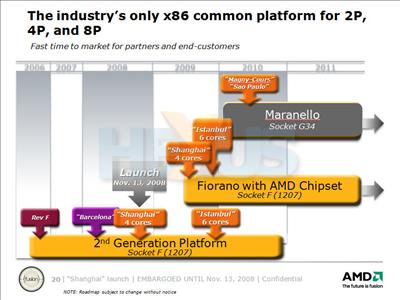What about Nehalem?
As we've written many times before on HEXUS, even if AMD does launch a good new product its success is determined to a considerable extent by what its competitors, in this case Intel, have positioned against it.
The general feeling is that, while Barcelona existed very much in the shadow of Intel's server offerings, Shanghai brings AMD at least up to speed with Intel's server processors based on the Core 2 architecture.
However, Intel is still haunted by the pre Core 2 era when AMD had the upper hand in performance and it's going to do everything in its power to ensure that situation never arises again. Hence it's in the process of launching Core i7 - codenamed Nehalem - which extends the CPU performance lead it already owns.
The desktop Nehalem will be launched next week but the server part is not expected for a couple of months after that, although you never know. Hence you could argue that AMD has quite a small window of time in which to convince people to defect from Intel before its next generation server platform is launched.
However, the term platform here is also important. Moving up to Nehalem from older Intel CPUs isn't as simple as just replacing the CPU; you also need a new motherboard and most probably new memory as Nehalem requires DDR3. This probably means that users will upgrade their whole system if they move up to Nehalem.
We were told that Shanghai is completely compatible with AMD systems designed for its Barcelona core Opteron and, as such, is referred to as a "drop-in" upgrade. Furthermore, it's claimed, that the next CPU upgrade - codenamed Istanbul - will also be compatible, though we suspect that what's meant is that Istanbul core CPU will most likely be compatible with systems designed for Shanghai and but less likely to be compatible with systems originally designed for Barcelona.
So AMD is saying that you can move to Shanghai more cheaply than to Nehalem. However, we question what percentages of companies attend to CPU upgrades for their servers, as opposed to upgrading a server in its entirety. We think that the 'drop-in" upgrade will be more beneficial to OEM's than those managing a corporate IT environment.










